Author | Heimi@Hakutaku Research Institute
Some early Web3 games (GameFi) have been criticized for their speculative nature, “the games are not fun to play because they focus too much on profits,” and some games are similar to Ponzi schemes, with revenue depending on attracting new players to buy NFTs or tokens. The failures of these early Web3 games have sounded the alarm for developers who are too eager for success, emphasizing the importance of building a “good gameplay + sustainable incentives” model. With the arrival of the crypto market winter, the Web3 game track has entered a deep bearish state, manifested intuitively in the short lifecycle of projects and the rapid loss of users.
However, at the recently concluded Japan Blockchain Week, Oasys, a public chain dedicated to games, injected new vitality into the Web3 game track. At the “Oasys Special Event,” Oasys announced its partnership with many game giants and gave us a glimpse of the games being developed on this network. Com2uS announced that its 3A chain game “Summoners War: Chronicles” will be launched on Oasys, and SEGA and Ubisoft are developing their first blockchain games based on Oasys. SEGA will work with chain game developer Double Jump Tokyo to develop a card strategy game based on its classic IP, “Sangokushi Taisen,” while Ubisoft’s first chain game is “Champions Tactics: Grimoria Chronicles.” (Related reading: “A detailed explanation of Oasys: EVM-compatible zero-fee high-speed game public chain”)
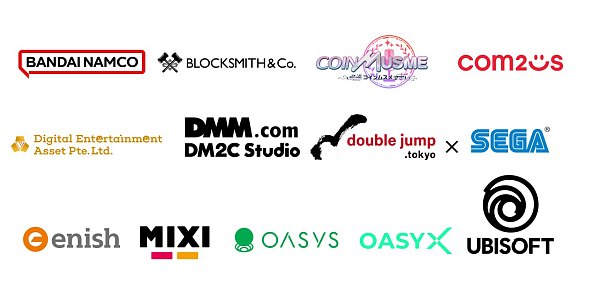
- Is a Bitcoin spot ETF coming soon?
- Viewpoint: Regulation of central bank digital currency urgently needs to be standardized
- NFT “Black Weekend”: What caused panic selling of multiple blue-chip NFTs?
In fact, in the current situation of the sluggish crypto market, regulatory obstacles, and several Web2 companies “withdrawing from the group,” SEGA and Ubisoft’s development of their first chain games on the Oasys network after years of exploration and trial and error in Web3 marks the full entry of these two traditional game giants into the Web3 field. And their adoption is also a huge driving force for Web3, and it is also the best proof that Web3 games will continue to exist.
Ubisoft: Failing to Sell NFTs, But Finally Entering the Chain Game
Ubisoft, needless to say, is a well-known French video game publisher that has developed many popular games such as the Far Cry series, the Assassin’s Creed series, the Ghost Recon series, the Rainbow Six Siege, the Watch Dogs series, and the Call of Duty series.

In search of innovation, Ubisoft took a bold step in the most hyped year of NFT in 2021 and ventured into the Web3 field to “experiment” by introducing virtual items in the form of NFTs based on the Tezos network for the PC version of Ghost Recon: Breakpoint. However, the results did not meet expectations, as the virtual items were only claimed 15 times and the total transaction volume on the NFT market was less than $400.
Ubisoft’s “experiment” not only failed to impress gamers, but even NFT enthusiasts seemed uninterested.
Almost no one among gamers cared about NFTs. On the Ghost Recon: Breakpoint forum on Reddit, most gamers rejected NFTs, leaving only a small group who were interested in obtaining them. However, two of the three NFTs required players to “grind” for 100 hours and 600 hours of gameplay respectively before they could claim them. Clearly, not many people were able to claim them even after the event ended.
As for NFT enthusiasts, there is a simple reason why they lack interest. When we can find unlimited investment opportunities in the entire crypto market, why would we be interested in a virtual helmet that requires us to play for 600 hours to obtain? Are the “monkeys” with meme properties and rich use cases not more attractive than this helmet?
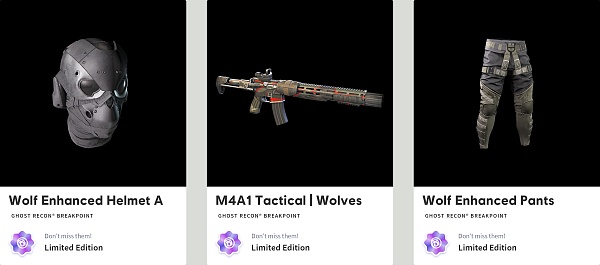
Faced with this failure, Ubisoft did not retreat. They continued to delve into the Web3 field by investing in blockchain game development company Animoca Brands and blockchain game project Frontier. They also released multiple NFTs again, covering Ubisoft’s classic IPs such as Rabbids and Assassin’s Creed.
Returning to Ubisoft’s recently announced blockchain game Champions Tactics: Grimoria Chronicles, it is a tactical RPG game based on the Oasys network and targeting PC players.

From the introduction, Ubisoft calls the game an “experiment” rather than a “blockchain game”, which may be a manifestation of “survival instinct” (to avoid scaring away traditional gamers). At present, detailed game information, release time, and NFT information have not been disclosed, but there is a cool trailer and a polarized comment section worth checking out. (https://www.youtube.com/watch?v=sKPixIolnYw&feature=youtu.be)
One interesting thing is that OG may receive an airdrop when the game is released.

And the smartest VCs in the industry are paying attention.
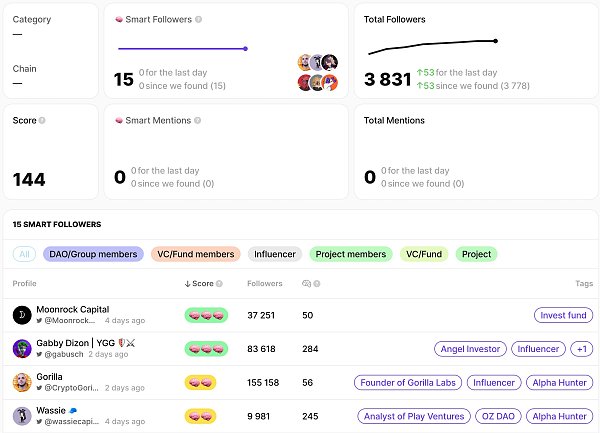
As a gaming giant, it is not difficult to guess that Ubisoft’s Star Ocean must be a Web3 game. This is reflected in its 2021 “Vision for Blockchain” report:
“Blockchain technology is a means to make games return to the community, allowing the time and items players spend=the contribution they make to the game=value. Our position is that adopting a wise approach to integrating blockchain into the game can achieve a more fair and player-centric path.”
However, whether “Champions Tactics: Grimoria Chronicles” can truly realize their vision remains to be seen after the game is released.
Sega: New wine in old bottles, giving IP new vitality
Sega is a game development company headquartered in Japan and is a force in the game industry that cannot be ignored. Popular game series under its umbrella include: “Sonic the Hedgehog” (global sales exceed 1.5 billion), “Yakuza”, “Phantasy Star”, and “Virtual Warrior”.
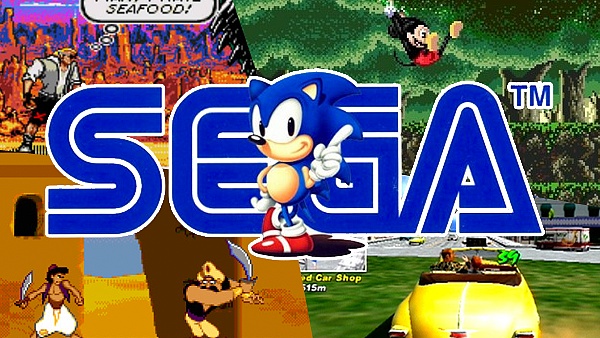
Like Ubisoft, Sega is no stranger to Web3.
As early as the beginning of 2022, Sega registered the trademark “SEGA NFT” for NFT, indicating that their intention for NFT and blockchain technology has been more than a year. At Gamescom 2022, the game exhibition in the same year, Sega once again expressed interest in blockchain.
In May of this year, Sega launched its first NFT on the Oasy network’s NFT market Oasy, with its classic IP “Virtual Warrior” as the theme.
As Sega’s first chain game, “Three Kingdoms Battle” is not a new IP, but a Web3 remake of the Web2 IP. The game is very popular in the gaming industry, especially in Japan.
As card strategy games like “Gods Unchained” become increasingly popular in the encryption industry, “Three Kingdoms Battle” (Web3 remake) with the same high quality and gameplay will open up new fans for this old IP.
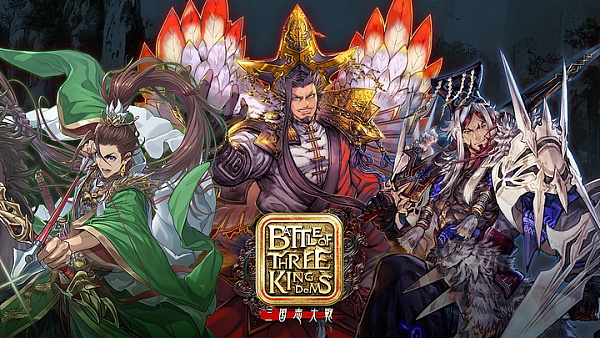
Based on the available information, “Sangokushi Taisen” (Web3 remake) is a card strategy game built on the Oasys network, featuring a new game design that allows players to build decks and engage in automatic battles within three minutes. The official trailer showcases the game’s beautiful graphics. The game will be launched at the end of 2023, only on the PC platform, and will be available in languages such as Japanese and English (with Chinese and Korean added in 2024).

Oasys: A hurricane that can’t be ignored, jointly created by giants for gaming
Sega’s “Sangokushi Taisen” will be developed by Double Jump Tokyo, a blockchain game development company. For those who are not familiar with it, one of Double Jump Tokyo’s businesses is to provide blockchain game development services to traditional game companies, and it has worked with many game giants including Sega, Square Enix, and Bandai Namco.
Double Jump Tokyo has developed several blockchain games, the most well-known of which is “My Crypto Heroes” and “My Crypto Saga”. In 2018, “My Crypto Heroes” was launched on Ethereum and attracted a large number of players in a short period of time. However, Ethereum’s poor user experience limited the entry of new users. Therefore, Double Jump Tokyo turned to develop a game-specific public chain, aiming to improve players’ gaming experience , which is Oasys.
The popularity of NFTs reached its peak in 2021, and it was also the starting point for game giants to focus on the Web3 field. Although hundreds of blockchain games have gone online in the past few years, players’ gaming experience has not been fully optimized, and problems related to gas fees, slow running speed, difficulty for new users, and risks for developers have always existed. Therefore, after Oasys was separated from Double Jump Tokyo, we can also see that the new team members come from top game developers and Web3 companies:
-
Gabby Dizon: Co-founder of the blockchain game union YGG.
-
Hajime Nakatani: President and CEO of Bandai Namco.
-
Hironobu Ueno: CEO of Double Jump Tokyo.
-
Hironao Kunimitsu: Founder of Gumi and CEO of Thirdverse.
-
Shuji Utsumi: Executive Vice President of Sega.
It is not surprising that Com2uS, SEGA, and Ubisoft, the world’s most famous game giants, use Oasys networks, as they are also the initial validators of the network.
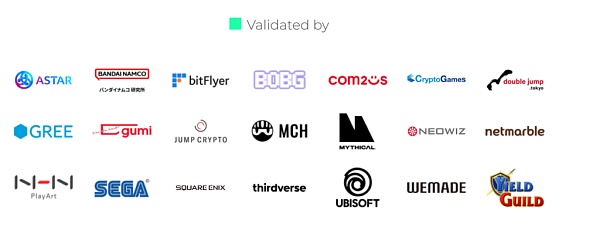
Compared with most game-specific public chains that have done “superficial work,” Oasys has taken a different approach and improved the player experience through a modular structure of “public L1 + private L2” with its new method.
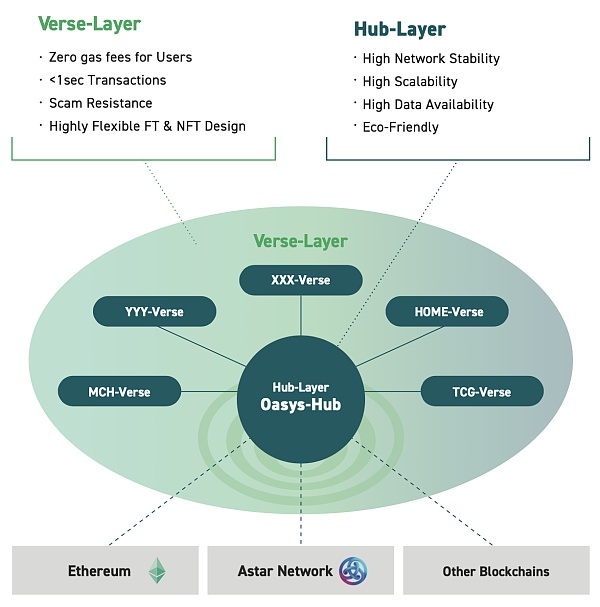
Users do not need to pay gas fees
In theory, Oasys does not require users to pay gas fees, which will be borne by the Verse layer (to be introduced later). Therefore, users do not need to prepare initial costs such as gas fees just to play games. At present, many chain games require initial costs such as gas fees, which are the main obstacles for ordinary users/Web2 players to enter.
Fast running speed
On many existing blockchain networks, a transaction usually takes several seconds to several tens of seconds. This time lag may cause great pressure on Web2 game players. Therefore, Oasys aims to provide a response level equivalent to Web2, so that ordinary users/Web2 players can enjoy a smooth gaming experience.
Avoid developer risks
Oasys eliminates the risks that traditional game companies with IP are worried about.
Entering the current NFT and chain game field presents significant barriers for companies and developers with existing IPs, including reputation risks (negative reputation, rumors, etc.) and IP protection. This is due to the open and permissionless nature of blockchain. Because blockchain does not require permission, the current situation is that although Web3 is very attractive, there are also many fraudulent products.
Oasys overcomes the above obstacles and allows companies that already have IP to safely enter the Web3 field.
To achieve the above three characteristics, we have to mention the network mechanism of Oasys. The Oasys network has three layers, each of which plays an important role.
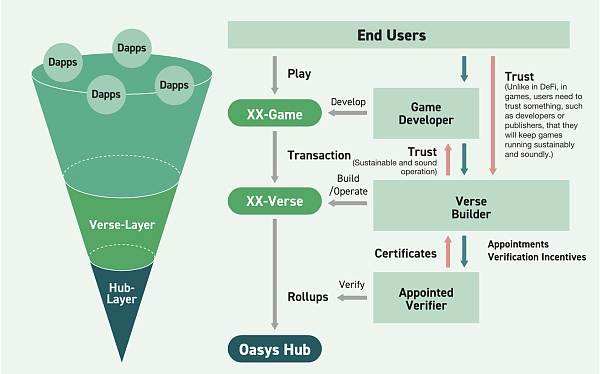
dApp layer
The Hub layer uses Proof of Stake (PoS) consensus algorithm, and anyone who stakes 10 million OAS can become a validator.
In terms of chain game development, Oasys provides developers with a high degree of freedom through three novel token standards.
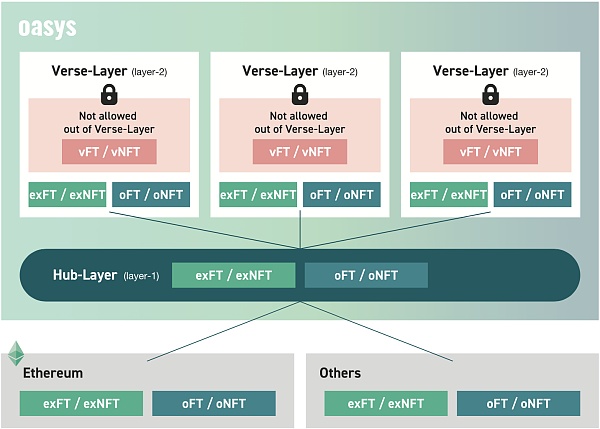
Custom Tokens (vFT/vNFT)
Each developer can issue vFT/vNFT in their own L2, which has the characteristic of being usable only in a specific L2. Therefore, it cannot be cross-chained and cannot be used in other L2s.
It is speculated that the use case behind it could be in-game currency (vFT) and IP (vNFT). vFT as in-game currency cannot be exchanged for legal tender and can only be used in-game. vNFT can protect the IP of NFTs, such as preventing NFTs from being used for unintended purposes or preventing counterfeits. For example, a developer can create an NFT that can only be used in their own L2.
Highly Interoperable Tokens (oFT/oNFT)
oFT/oNFT is a token created in the Hub layer, which is characterized by its usability in the entire Oasys ecosystem (Verse layer and Hub layer) and cross-chain to other chains (such as Ethereum).
This provides game developers with a great deal of flexibility, as by using both oFT/oNFT and vFT/vNFT, developers can only open up a portion of in-game tokens to user groups outside of their own L2, such as character NFTs as vNFTs, and land or items as oNFTs.
External Tokens (exFT/exNFT)
exFT/exNFT are tokens minted on networks outside of Oasys and can be cross-chained into the Oasys ecosystem (Hub layer and Verse layer) via cross-chain bridges.
Oasys’s Verse layer currently has 5 L2s, each of which is like a small game ecosystem:
-
MCH Verse: Originally established by Double Jump Tokyo for “My Crypto Heroes,” it later added other games, including “My Crypto Legends,” “Prompt Monsters,” “Loot By Rogue,” “Remonster,” “Chian Colosseum Phoenix,” and “Harbor Bcg.”
-
TCG Verse: An L2 dedicated to card games, currently has 8 online card strategy games, including “NFTWars,” “Climate Guardians Clicker,” “CryptoSpells,” “The Nemots,” “OasChoice,” “Kyrie&Terra,” “Eveden: Next Level Card Game,” and “Lootadog.”
-
Home Verse: Developed and operated by Double Jump Tokyo, all types of games can choose to go online on this L2. Currently, there are eight games online, including “DimeTime,” “Defend the kingdoms,” “Alkenome Monsters,” “Sheepfarm in Meta-land,” “Yomi Gradens,” “9Lives Arena,” “Brave Frontier Heroes,” and “Dark Throne.”
-
Chain Verse: Developed and operated by ChainGardians (a DAO-driven game asset issuance platform), it accepts all independent games. Currently, there are three online games, “ChainArena,” “Voxel Worlds,” and “Race4Sky.”
-
Saakuru Verse: Developed and operated by AAG (a Web3 infrastructure company), all types of dApps can go online on this L2. Currently, only two small games, “GOGA” and “TomoOne,” are online.
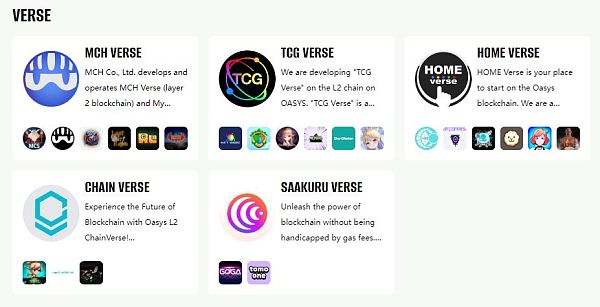
Conclusion
As the white paper states, Oasys emphasizes the importance of user trust in L2 builders, so at this stage we can refer to Oasys as a Web2.5 blockchain, as it has made compromises in terms of decentralization at the Verse layer. However, according to the roadmap, Oasys aims to eventually become a DAO and achieve community-driven on-chain governance.
In addition, since the launch of a game requires the permission of the validators in the L2 where it resides, we can expect that the early development of the Oasys ecosystem will be relatively slow compared to other new public chains, just as the early development of the Optimism ecosystem was slower than that of Arbitrum. Therefore, whether Oasys can succeed in the short term will depend on its ability to continuously introduce core IP from game giants to attract more Web3 developers and users.
However, as things stand, Oasys is like a newborn hurricane that is sweeping the Web3 gaming world. Since its launch in October 2022, Oasys has launched 28 chain games and established partnerships with many game giants, including Ubisoft and Sega, whose first chain games will also be built here. With more established partnerships and roadmap development, Oasys is worth long-term attention.
Sandeep Nailwal, co-founder of Polygon, has said, “Web3 gaming is one of the biggest drivers of cryptocurrency adoption. In the next 6-18 months, there will be some top games released on Web3. Last year alone, funding for Web3 gaming exceeded $2 billion.”
Will the entry of these “regular troops” mark the start of the second half of the Web3 gaming world, bidding farewell to the barbaric development of the past? Let’s wait and see.
Risk warning:
According to the “Notice on Further Preventing and Dealing with Risks Associated with Virtual Currency Trading Speculation” issued by the central bank and other departments, the content of this article is for information sharing only and does not promote or endorse any business or investment activities. Readers are strictly required to comply with local laws and regulations and not participate in any illegal financial activities.
Like what you're reading? Subscribe to our top stories.
We will continue to update Gambling Chain; if you have any questions or suggestions, please contact us!